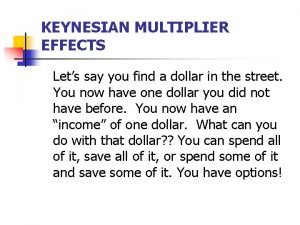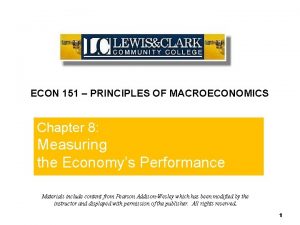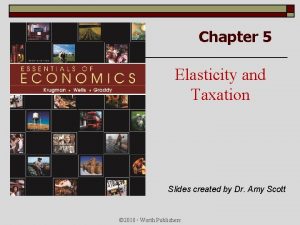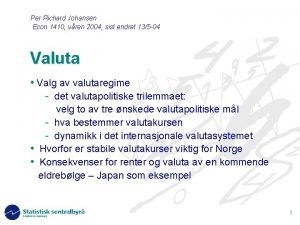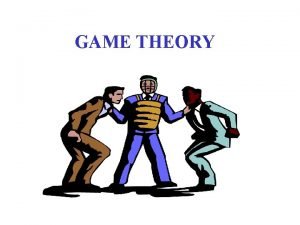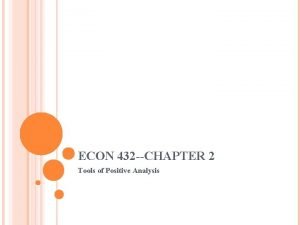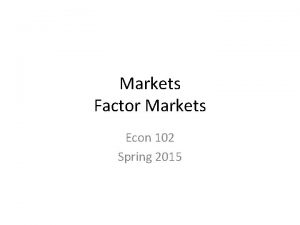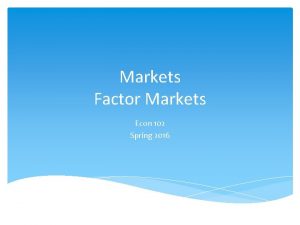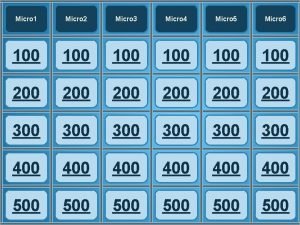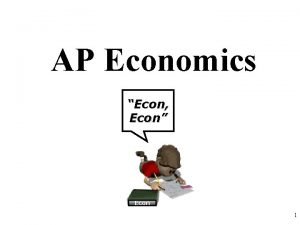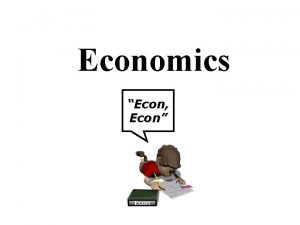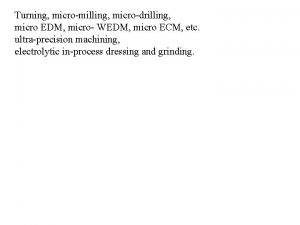Module Micro 33 Econ 69 Factor Markets Introduction













- Slides: 13

Module Micro: 33 Econ: 69 Factor Markets: Introduction and Factor Demand KRUGMAN'S MICROECONOMICS for AP* Margaret Ray and David Anderson

What you will learn in this Module: • How factors of production—resources like land, labor, and capital—are traded in factor markets. • How factor markets determine the factor distribution of income. • How the demand for a factor of production is determined.

Factors of Production • Labor • Land • Capital • Entrepreneurship

Factors of Production • Labor: the work done by humans. • Land: resources provided by nature. • Capital: physical capital such as tools, machinery and factories, plus human capital such as education and training. • Entrepreneurship: the talent for taking risks to bring together resources for innovative production

Factor Prices • Factor prices allocate resources among producers • The demand for a factor of production is a derived demand • Most people get the largest share of their income from factor markets

Marginal Productivity and Factor Demand • Marginal product (MP) is the additional output produced as a result of hiring an additional unit of a factor of production. For example, MPL = additional output from hiring an additional worker. • The value of the marginal product (VMP) is the value of the additional output produced as a result of hiring an additional unit of a factor. For example, VMPL = MPL x P. • The VMP curve is the demand curve for a factor (with a perfectly competitive labor market).

What Causes the Factor Demand Curve to Shift? • Changes in the prices of goods W and VMPL • Changes in the supply of other factors VMP = D • Changes in technology Units of Labor

Figure 69. 1 Factor Distribution of Income in the United States in 2009 Ray and Anderson: Krugman’s Economics for AP, First Edition Copyright © 2011 by Worth Publishers

Figure 69. 2 The Production Function for George and Martha’s Farm Ray and Anderson: Krugman’s Economics for AP, First Edition Copyright © 2011 by Worth Publishers

Table 69. 1 Employment and Output for George and Martha’s Farm Ray and Anderson: Krugman’s Economics for AP, First Edition Copyright © 2011 by Worth Publishers

Table 69. 2 Value of the Marginal Product of Labor for George and Martha’s Farm Ray and Anderson: Krugman’s Economics for AP, First Edition Copyright © 2011 by Worth Publishers

Figure 69. 3 The Value of the Marginal Product Curve Ray and Anderson: Krugman’s Economics for AP, First Edition Copyright © 2011 by Worth Publishers

Figure 69. 4 Shifts of the Value of the Marginal Product Curve Ray and Anderson: Krugman’s Economics for AP, First Edition Copyright © 2011 by Worth Publishers

